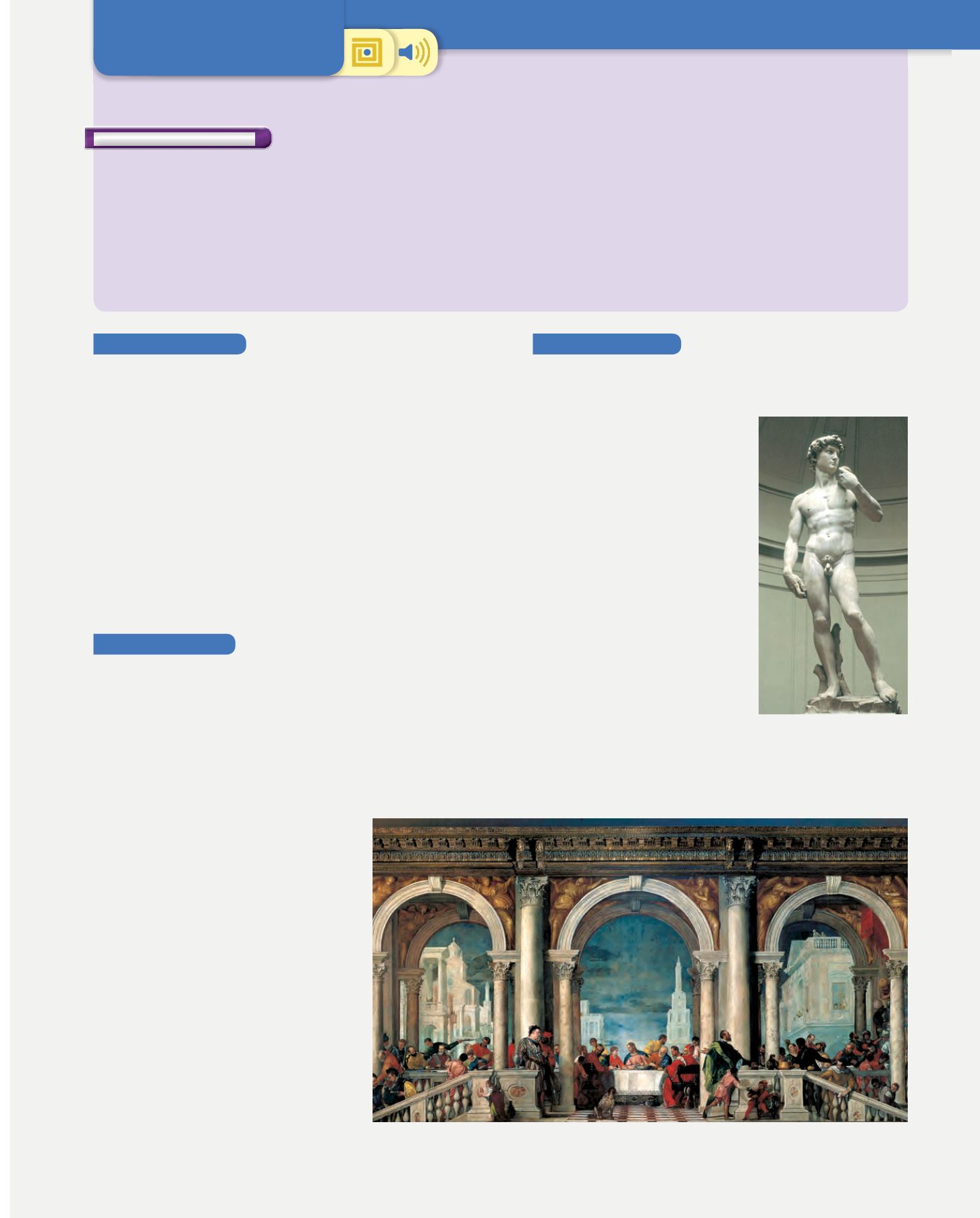
The Renaissance
❚
At the beginning of the Early Modern Age a new artistic style emerged in Italy and spread throughout
the rest of Europe: the Renaissance.
❚
In Italy, architects aimed for harmony, simplicity, open spaces and proportion. They incorporated
features from Greek and Roman art such as columns, friezes and semi-circular arches. The most
important architect was Brunelleschi.
❚
In painting and sculpture, the Italian artists aimed for idealism, serenity and balance in their compositions. They portrayed the
human body realistically and introduced
perspective. The most important artists
were Leonardo da Vinci, Michelangelo
and Raphael Sanzio.
❚
The Italian Renaissance included various
phases: in the Trecento (14th century)
the first features appeared; in the
Quattrocento (15th century), Florence
was the main artistic centre; in the
Cinquecento (the first half of the 16th
century), Rome was the cultural centre
with Venice; in the second half of the
15th century, Mannerism appeared.
❚
The Flemish school of painters produced
theoil technique, (VanEyck). InGermany,
the most important artist was Durer. In
France, the defining feature of the
Renaissance was the building of castles.
9
The Early Modern Age
9. The early modern age. Humanism and the Renaissance
183
Cultural changes
❚
A new cultural movement emerged, called
humanism
.
It was characterised by the revival of classical culture,
anthropocentrism, optimism
and creativity, desire for
knowledge, critical thinking
and the use of the vernacular.
❚
The most notable humanists,
wereDante, Petrarch, Boccaccio,
Erasmus
of
Rotterdam,
Machiavelli and Thomas More.
❚
There were also scientific
advances and the
printing
press
was invented.
❚
The Early Modern Age began with the
Fall of Constantinople
in 1453 and ended with the
French Revolution
in 1789.
The transition from one era to another involved a slow transformation on all levels (economic, social, political and cultural).
❚
At the beginning of the Early Modern Age there were important economic changes: agricultural production increased,
craftsmanship and trade grew and
mercantile capitalism
developed.
❚
The privileged class continued to be the nobility and the clergy, but the
bourgeoisie
became more
influential
in the cities.
❚
The
cities
grew in number and size.
The modern state
❚
The kings reasserted their power over the nobility and the
bourgeoisie and established
authoritarian monarchies
.
❚
The defining characteristics of the
modern state
were a
greater
centralisation
of power by creating new governmental
institutions, the employment of officials and the creation of
powerful armies that served the monarchs.
❚
The main
authoritarian monarchies
were the Spanish,
(established by the Catholic Monarchs), Portuguese (pioneers in
the search for new trade routes), French and English and Russian
monarchies.
❚
Italy and Germany continued to be divided and became the scene
of war between the most powerful authoritarian monarchies. In
Eastern Europe, the Ottoman and Russian Empires expanded.
David,
Michelangelo
Cena de Jesús en casa de Leví,
by Pablo Veronés.
KEY CONCEPTS


